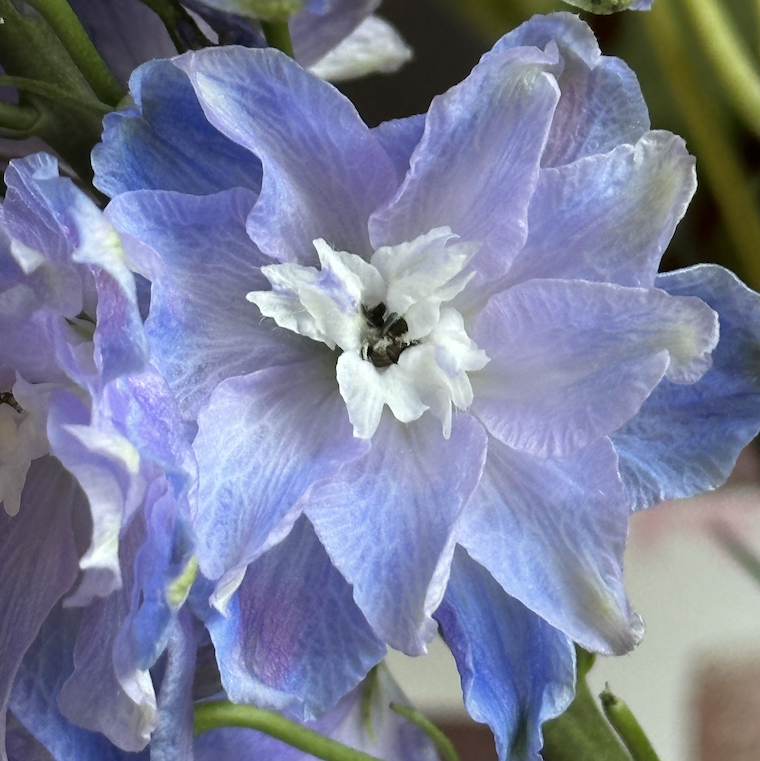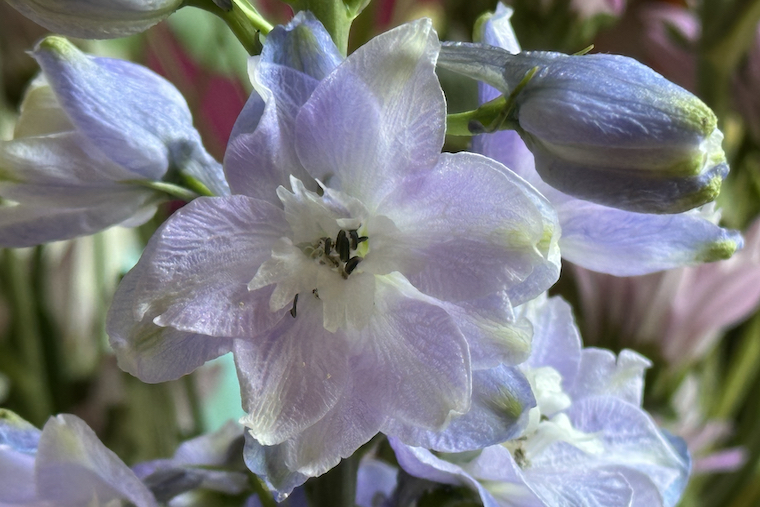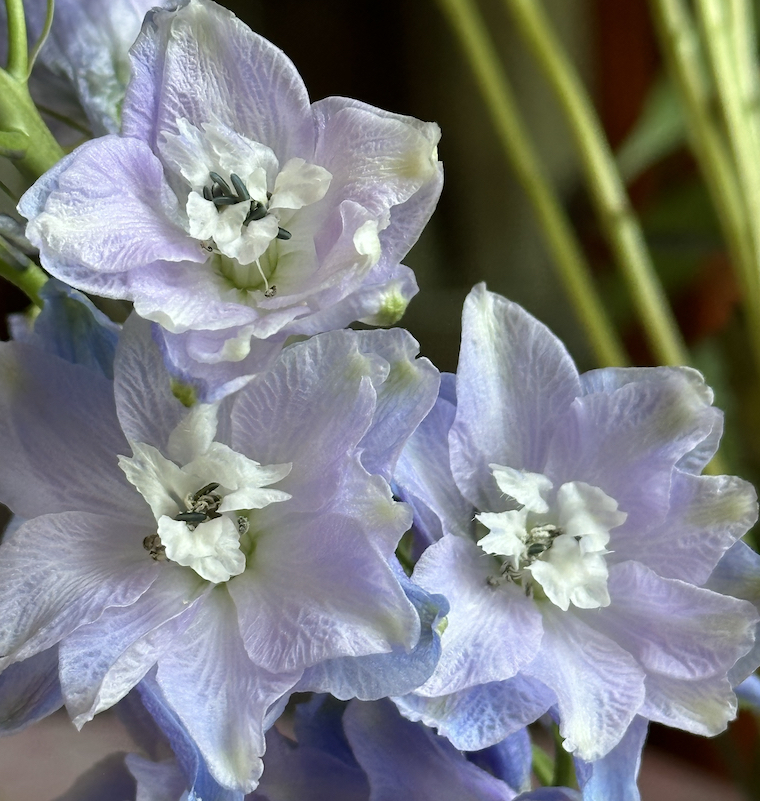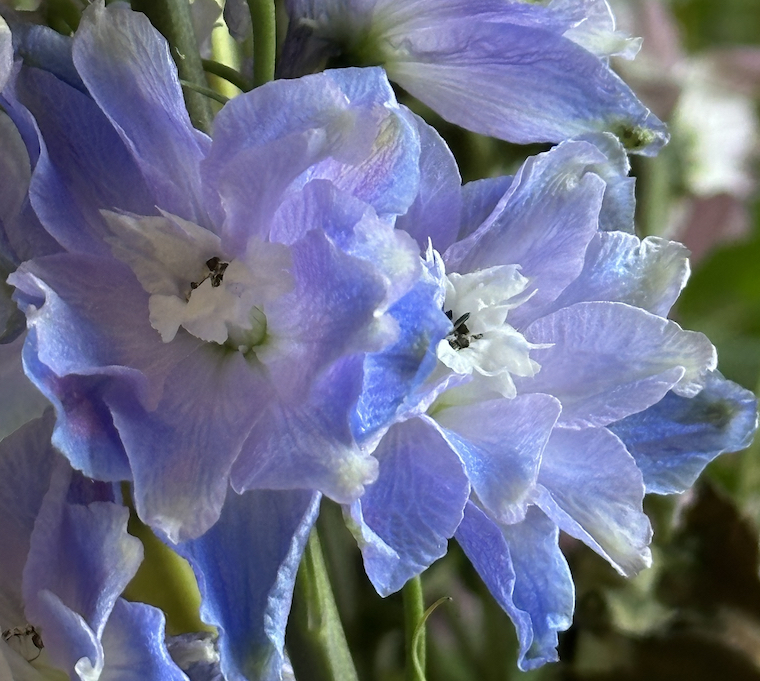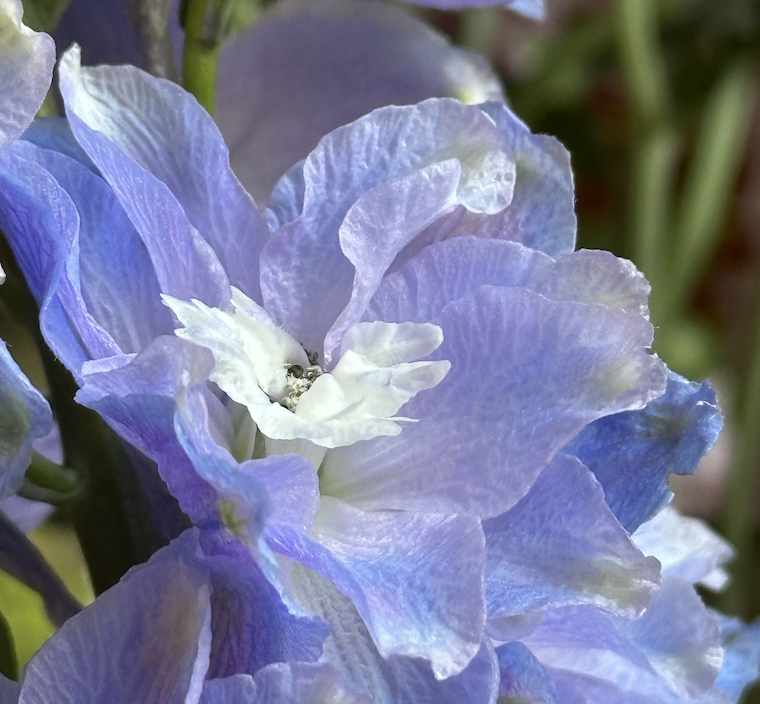The scent of carved wood seeps out when the air reaches the right temperature and level of humidity in the Victorian entryway of the house where we spent my childhood Fourth of July celebrations. In a large vase, a sumptuously-full bouquet of garden flowers taken at the height of their glory sprawled out from their perch. The majesty was mostly made up of a gorgeous collection of delphinium blooms – the kind that Lee Bailey once decried as too finicky and difficult to grow in his Bridgehampton gardens.
It was one of the first times I’d see their legendary blue blossoms up close, and I wasn’t supposed to dwell very long in that deserted entry way. The party was outside, in the massive side yard where we had to play softball, and along the driveway, where enormous tires of ice held all sorts of Adirondack sodas. Typical Fourth of July trappings in upstate New York, filled with beer-swigging adults, rowdy kids, and the sort of crowd I wanted mostly to simply avoid. And so I took my time in the ruse of seeking a bathroom, and here is where I found that bouquet, and the magnificence of the delphinium.
Back outside, in the heat and sun of the day, I followed the driveway deeper into the yard, and away from the crowd. I reached its end and continued on into the lawn, extending down to the back of the property, where voices grew dim and muffled, and the quiet that I always craved came back in temporary relief. A secluded row of gardens revealed itself behind a wall of hedge, and I found the source of the flower vase filled with delphiniums. There were only a few secondary blooms left behind, but they were just as beautiful, perhaps more-so with the imperfect zigging and zagging of the awkwardly-angled stems that didn’t make the show.
Too few flowers give us the blue of the sky. Maybe the sky is enough for all the varieties of blue it wears. Maybe the flowers wanted to fill different voids, shine in different ways. In this secluded, secret garden, I waited out a bit of the party, happier in the quiet company of the unchosen delphiniums.
Back to Blog
